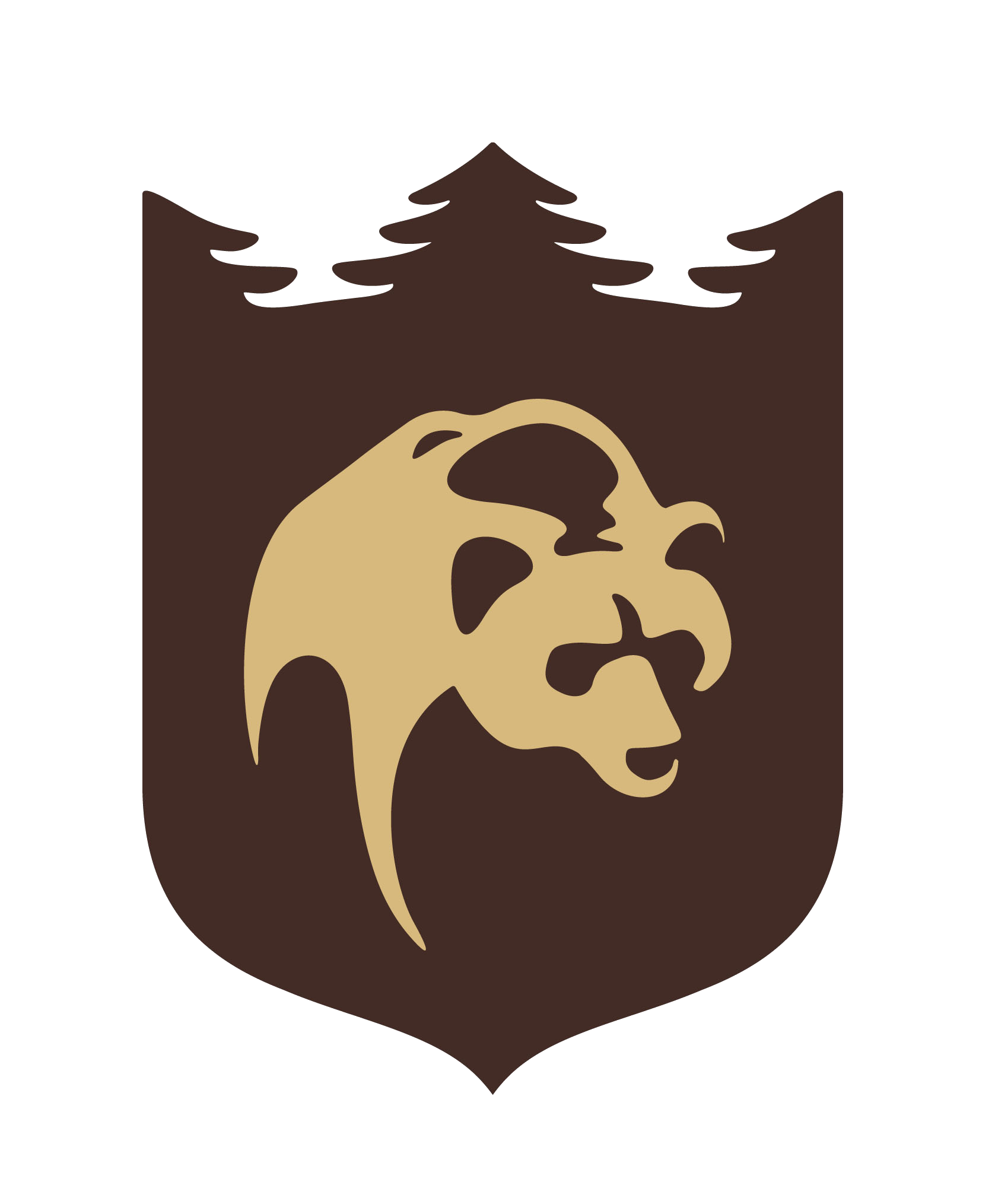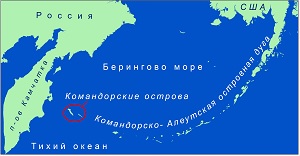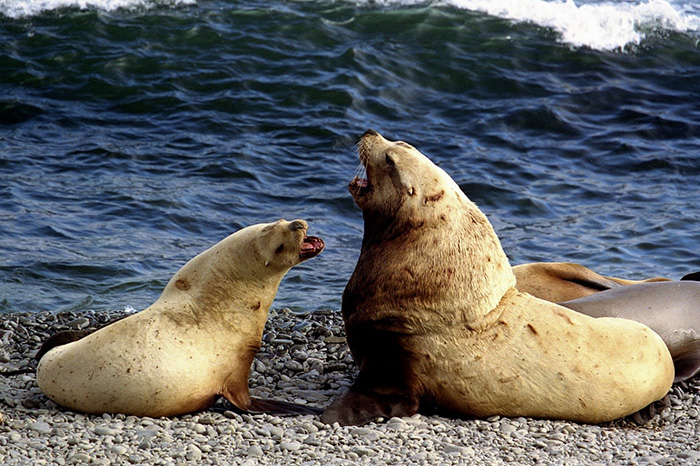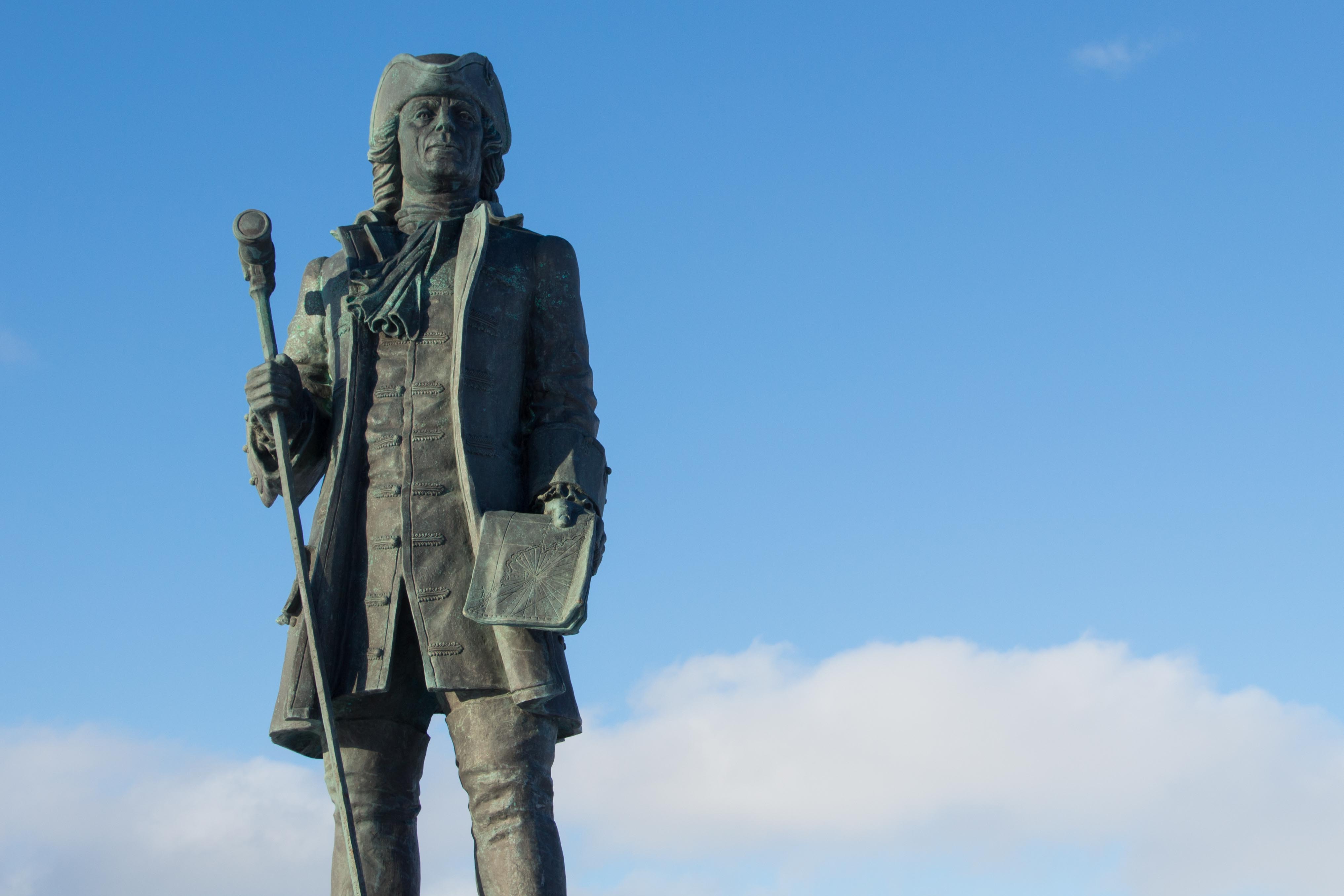On December 8, 2016 O.S. (December 19 N.S.) is a day to remember. 275 years ago Vitus Jonassen Bering (1681-1741), famous Russian navigator and the discoverer of the Commander Islands, has tragically perished.
Vitus was born in a small Dutch town, called Horsens. His mother was Anna Bering and his father was Jonas Svendsen from Halmstad. Except for their common children Jonas had a son and a daughter from the first marriage. Vitus’s stepbrother had a difficult destiny. He served his sentence in South India, that is why Vitus preferred his mother’s family name. Bering’s family crest, created in 1730s, according to the family’s old tradition was some kind of pictorial puzzle. The end of the family name – “ring” – was showed as an actual ring, but the other part of the name, which reflects Scandinavian word for “mountain” – “bjerg” – was depicted as Russian bear – “bаr”. Bering not only lived and served in Russia, but became a part of the country and Russia became a part of his destiny. Common people called him Ivan Ivanovich.
Vitus Bering graduated from Sea Cadet Corp in Amsterdam in 1703 and just in a year after his voyage to East India he became Sub-lieutenant in Russia. From that moment and to the very end of his life Vitus Bering served Russia faithfully and loyally. From 1705 to 1723 he served in Azov and Baltic Sea as Commander of Munker snow in war with Turkey. He picketed and transferred ships to Revel, which is now called Tallinn. In 1716 he became Captain of Perl, in 1719 – of Salathiel and in 1723 he was appointed Captain of one of the largest Russian ships of those times – Lesnoye.
In December 1724 Peter I appointed Captain I rank Vitus Bering to head the First Kamchatka Expedition. During two years of the marine journey 3500 km of the coast of a sea was mapped. The sea was later named after Vitus Bering - the Bering Sea. Still their goal was achieved only partially as boat St. Gabriel passed through a straight to Chukchi Sea and proved that Asian and North American coasts are separated. Because of thick fog the researchers didn’t manage to see the American coast. Bering came up with a plan of research of the North East of Asia on a larger scale, which included a strategically important way to Japan and North America.
In 1733 Vitus Bering headed the Second Kamchatka Expedition, which was later called the Great Northern Expedition because of its large scale. During 10 years of work the groups mapped the northern and eastern coasts of Russia, explored the inner regions of Siberia and found the ways to America and Japan. These discoveries were important not only for science. Regular mail communication with Okhotsk, Yakutsk, Irkutsk and Tyumen was established together with creation of new trade routes.
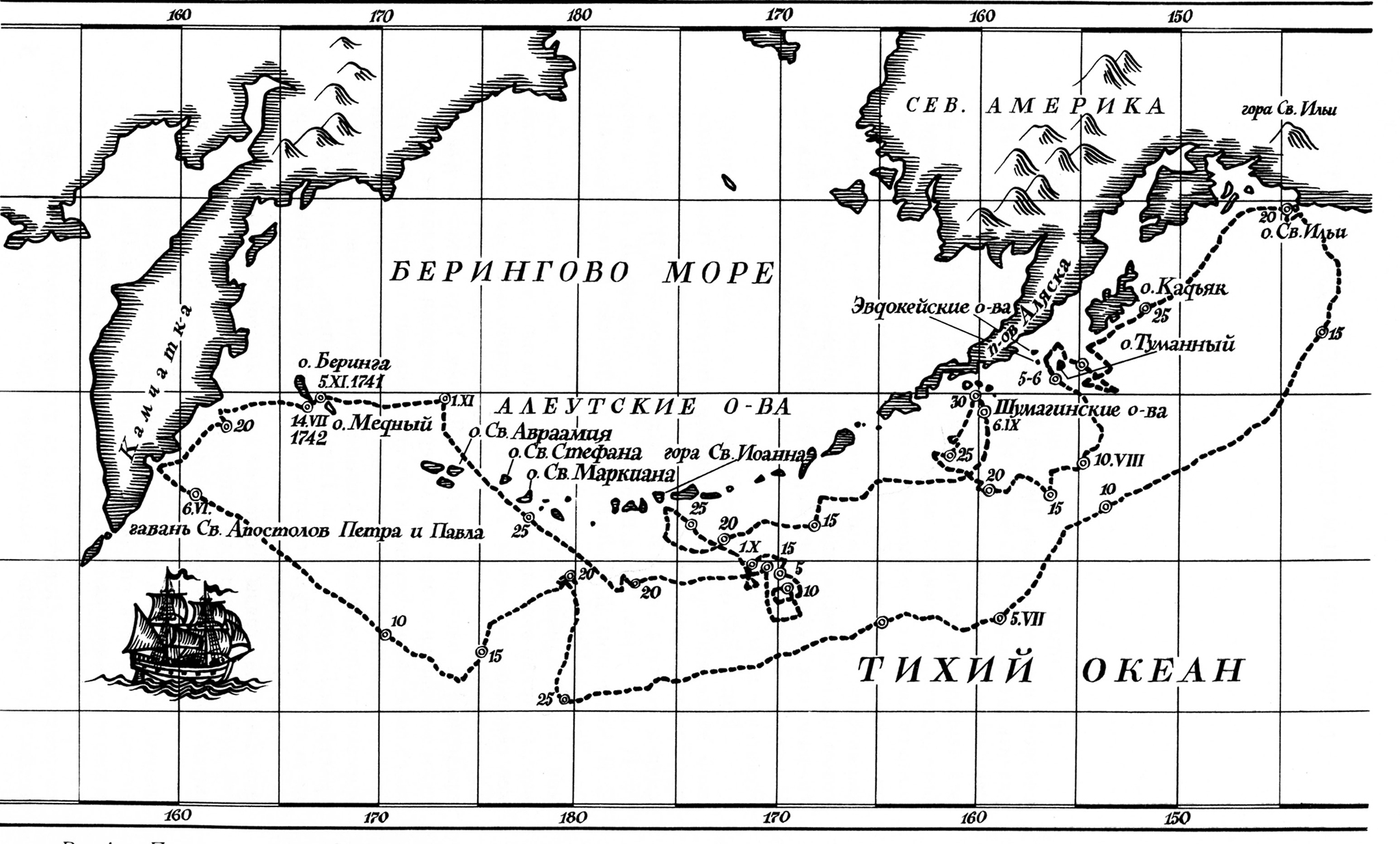
The Second Kamchatka Expedition scheme: route of St. Peter, commanded by Vitus Bering
Vitus Bering’s life ended on an uninhabited island near Kamchatka, which now bears his name. It happened in the end of 1741 on the return trip from Alaskan coasts. When the first signs of land were seen, the exhausted crewmen, some with Barlow’s disease, went on deck to see it. Bering, who was sick at the time, was not happy at all. The officers opened the plan of Avacha region and persuaded themselves that they could see Isop, Shipunsky Cape, entrance to Avachinskaya Bay and even the lighthouse. But Bering was an experienced navigator, so he doubted it was Kamchatka, he realized that it could be just one of the islands. Still he was not sure, so he didn’t want to disappoint the crew. This hope supported the half-dead crew and to quench it meant to let them die.
The forced wintering was harsh. 20 crewmen, including Captain Commander, died during the first months. Vitus Bering died on December 8, two hours before dawn. He wasn’t young, moreover, he was sick and exhausted from continuous troubles and conflicts in the last ten years of his life. One of the participants of the expedition, naturalist and ship’s doctor Georg Steller thought that Bering died “more of hunger, frost, thirst, parasites and grief, then of a disease.” However, as hard as it was to see the Commander die, “his self-control, death preparations and the redeeming end, which took him when he was in full control of his thoughts and speech, are worth admiring.”
Bering was very religious. Religion gave him force and fascinating love for mankind. Despite of all the hardships, pain and deprivation, he felt responsible for the task given to him be Peter the Great. Commander died in a cold windswept pit with a piece of sailcloth instead of roof, but nevertheless, he was happy, as he managed to do his duty to people and God.


